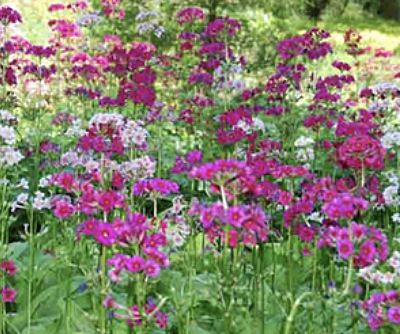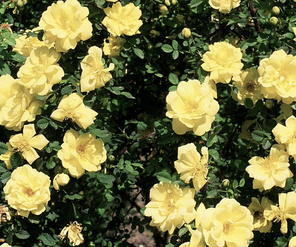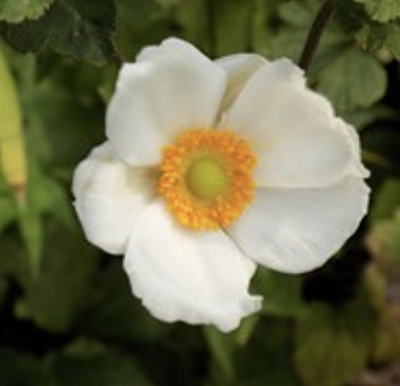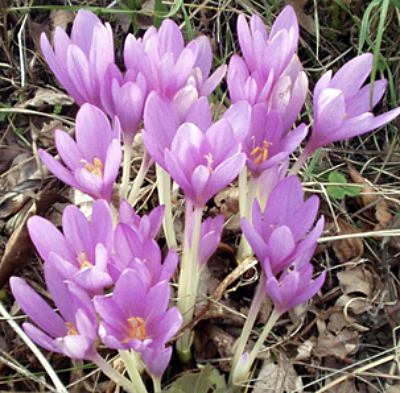The Van Loveland Perennial Garden has long been cherished by visitors at Landis, and many friends (and hands) have kept the garden growing over the years. In the past, the garden beds stretched across the field where the Magnolia Collection is now located. There was an annual flower garden across from the Barn and a collection of roses behind the Farmhouse. Although the garden has changed over time, many of the original flowers remain and include a few that impress visitors year after year.

The Primula japonica (candelabra primrose) continues to grow happily along the rock wall and in the field just beyond the Van Loveland Garden. The wet and shady environment is perfect for this stunning low-maintenance perennial, which will bloom from May through July -- unless drought occurs. A palette of lime green leaves complements the light and dark pink flowers that open on tall stems about a foot off the ground.

Rosa ‘Harrison’s Yellow’ (Oregon Trail Rose) began its story in the early 1800’s as a chance hybrid in a garden just outside of New York City (Wikipedia). Cuttings were marketed, and the flower was said to be introduced to the western United States by pioneer women who travelled along the Oregon Trail. This wonderful rose, over five feet tall and at least as wide, stands along the driveway side of the garden. When in bloom, cheery and fragrant yellow flowers cover the plant, a true show stopper.

Our Clematis viticella ‘Betty Corning’ could be one of Landis’ most unique and historic plants in the Van Loveland Perennial Garden. It was discovered in the 1930s by Betty, wife of Albany’s Mayor Erastus Corning and president of the Landis Board of Trustees, and subsequently introduced into the botanical world. The ‘Betty Corning’ clematis is a drought tolerant plant that needs little maintenance. It is covered with the sweetest bell-shaped lavender flowers all summer. Slightly fragrant, it attracts bees and hummingbirds. Landis has two thriving specimens along the garden’s main corridor.

The Anemone x hybrida ‘Honorine Jobert’ is located along the stone walkway perpendicular to the Betty Corning clematis. Its long-awaited blooms open on tall stems in late August and last well into fall. This “old-time perennial” brings back memories of the sophisticated and romantic gardens of the past, although it certainly has a place in today’s gardens as well.

Colchicum autumnale, often called “autumn crocus”, is a fall-flowering bulb, often confused with the true, spring-flowering crocus. Related to the lily, Colchicum autumnale produces its leaves in spring, then pulls all of its energy back into the bulb. As the season proceeds it is easy to forget about those leaves, until one day in early or mid-September a beautiful purple flower suddenly appears. Then another, and another, with no leaves. Though each flower lasts only a few days, every bulb produces flowers in abundance, and new blooms open again and again. Landis has a lovely fall display of Colchicum flowers in the garden. There are several varieties, including the large Colchicum byzantinum and Colchicum speciosum ‘Alba’ (white autumn crocus).
All are welcome to visit the Van Loveland Perennial Garden at Landis, dawn to dusk, and enjoy these (and many more) beautiful blooms. Landis also displays many of its plants on its website (www.landisarboretum.org), Facebook page (www.Facebook.com/LandisArb), and Instagram (Instagram.com/landisarboretum/). Come and see, smell, touch, and enjoy this abundance of nature with us!
